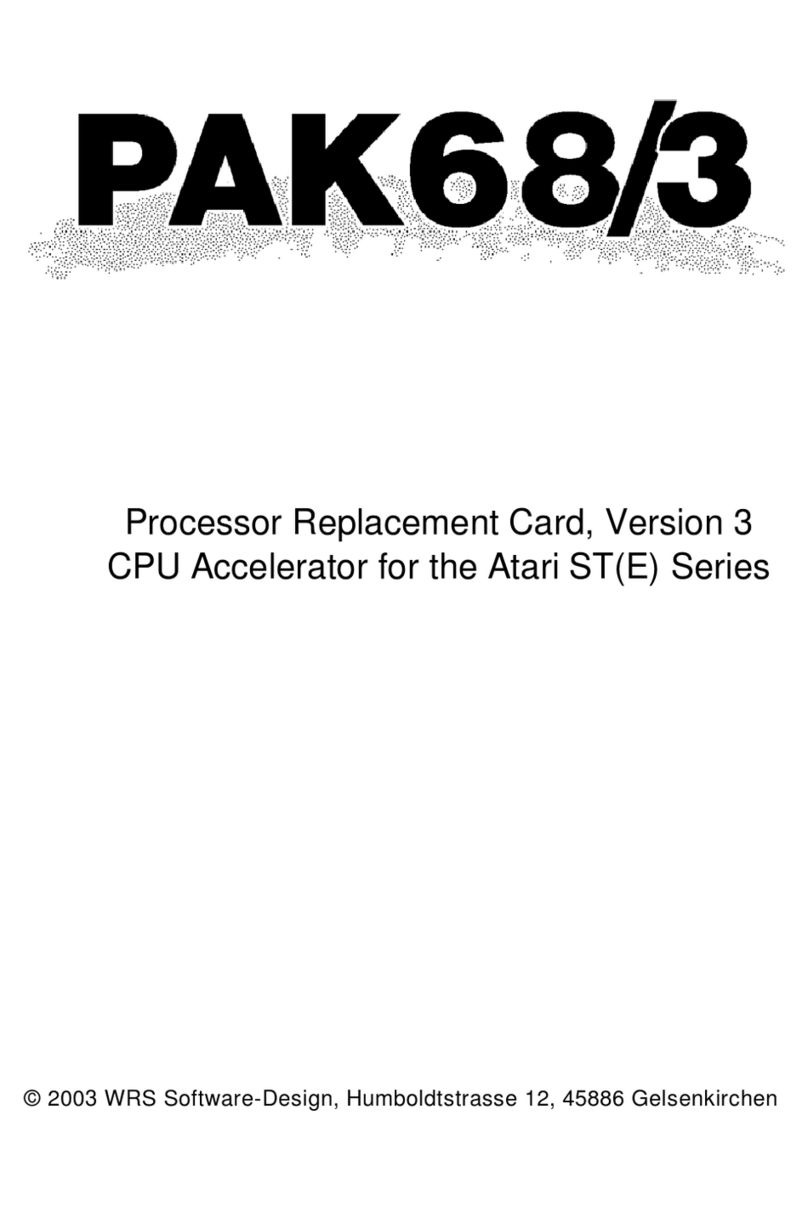
3. Installing the PuPla/2
Page 7 PuPla/2
Also, you must replace GAL U4 on the PAK in order for the
address latch feature of the PuPla/2 to work. If the GAL V4-50ac
was included in your order, you can now use it to replace the
PAK GAL U4. If the GAL was not included in your order, you will
have to update the PAK GAL U4 yourself. The JEDEC files for
the PuPla/2, as well as for the PAK, FRAK/2 and the Panther/2
bus adapter are public, but only released for private use. You can
download the JEDEC files from our homepage (this archive
replaces the old "FR2GAL?.LZH") or you can obtain them by
mailing us a stamped envelope and a properly formatted disk.
Please note that the PAK will not work with PuPla/2 without
the GAL V4-50ac!
You can now reassemble the PAK-tower and plug it back into the
mainboard. This completes the installation. If you have a
preexisting control signal from the Panther/2 to the PuPla/1 it is
no longer necessary. The PuPla/2 uses J1 to make all the
necessary adjustments so that the data bus drivers of the
Panther/? and PuPla/2 do not work against each other when the
Panther/? is operated above the PuPla/2.
The exact meanings of the jumpers are explained in Chapter 4.1.
3.4 Installation without PAK / PLCC CPU
In this case you'll need a PLCC-to-DIP adapter. These are
available in two main types: Solderless plug adapter and plug
adapter requiring soldering (based on precision socket pins). I
can strongly advise against the former! Sooner or later these
adapters will cause contact problems due to mechanical
instability. Unfortunately, solder-in plug adapters are nowhere to
be found. If necessary, please contact us. However, if you have
such an adapter, you need very good soldering skills and top-
notch tools for installation. I can only advise against casual users
trying this type of conversion. Already several people have killed
their beloved STE this way...




























